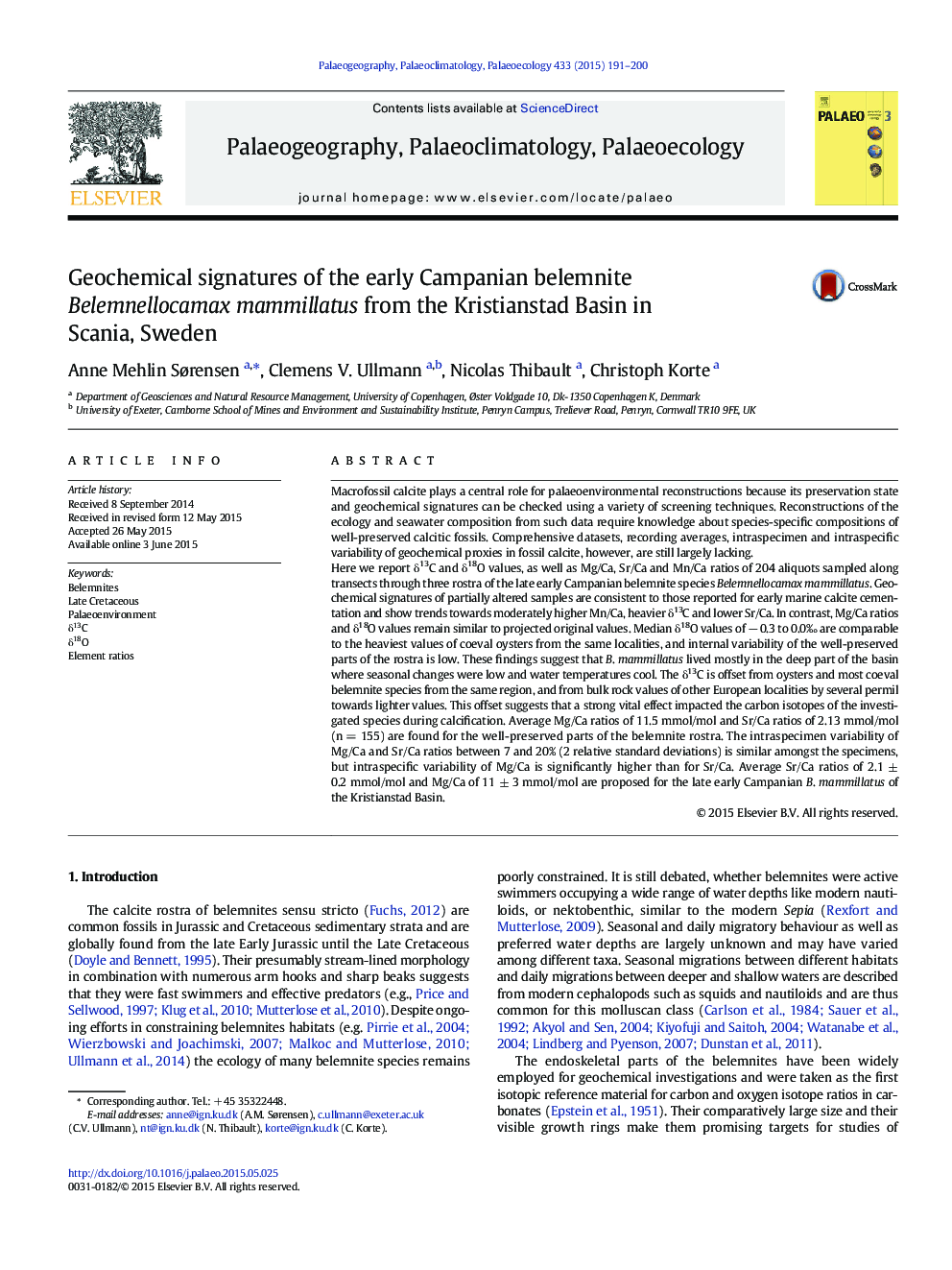| کد مقاله | کد نشریه | سال انتشار | مقاله انگلیسی | نسخه تمام متن |
|---|---|---|---|---|
| 4465928 | 1622157 | 2015 | 10 صفحه PDF | دانلود رایگان |

• δ13C, δ18O and element ratios of the Campanian belemnite B. mammillatus are presented
• δ18O values suggest a nektobenthic life habit in the deep part of the basin
• δ13C values are strongly influenced by vital effect
• Taxonomy is vital when using belemnite δ13C for palaeoenvironmental interpretation
• Mean Sr/Ca ratios of 2.1 mmol/mol and Mg/Ca of 11 mmol/mol are found for the rostra
Macrofossil calcite plays a central role for palaeoenvironmental reconstructions because its preservation state and geochemical signatures can be checked using a variety of screening techniques. Reconstructions of the ecology and seawater composition from such data require knowledge about species-specific compositions of well-preserved calcitic fossils. Comprehensive datasets, recording averages, intraspecimen and intraspecific variability of geochemical proxies in fossil calcite, however, are still largely lacking.Here we report δ13C and δ18O values, as well as Mg/Ca, Sr/Ca and Mn/Ca ratios of 204 aliquots sampled along transects through three rostra of the late early Campanian belemnite species Belemnellocamax mammillatus. Geochemical signatures of partially altered samples are consistent to those reported for early marine calcite cementation and show trends towards moderately higher Mn/Ca, heavier δ13C and lower Sr/Ca. In contrast, Mg/Ca ratios and δ18O values remain similar to projected original values. Median δ18O values of − 0.3 to 0.0‰ are comparable to the heaviest values of coeval oysters from the same localities, and internal variability of the well-preserved parts of the rostra is low. These findings suggest that B. mammillatus lived mostly in the deep part of the basin where seasonal changes were low and water temperatures cool. The δ13C is offset from oysters and most coeval belemnite species from the same region, and from bulk rock values of other European localities by several permil towards lighter values. This offset suggests that a strong vital effect impacted the carbon isotopes of the investigated species during calcification. Average Mg/Ca ratios of 11.5 mmol/mol and Sr/Ca ratios of 2.13 mmol/mol (n = 155) are found for the well-preserved parts of the belemnite rostra. The intraspecimen variability of Mg/Ca and Sr/Ca ratios between 7 and 20% (2 relative standard deviations) is similar amongst the specimens, but intraspecific variability of Mg/Ca is significantly higher than for Sr/Ca. Average Sr/Ca ratios of 2.1 ± 0.2 mmol/mol and Mg/Ca of 11 ± 3 mmol/mol are proposed for the late early Campanian B. mammillatus of the Kristianstad Basin.
Journal: Palaeogeography, Palaeoclimatology, Palaeoecology - Volume 433, 1 September 2015, Pages 191–200